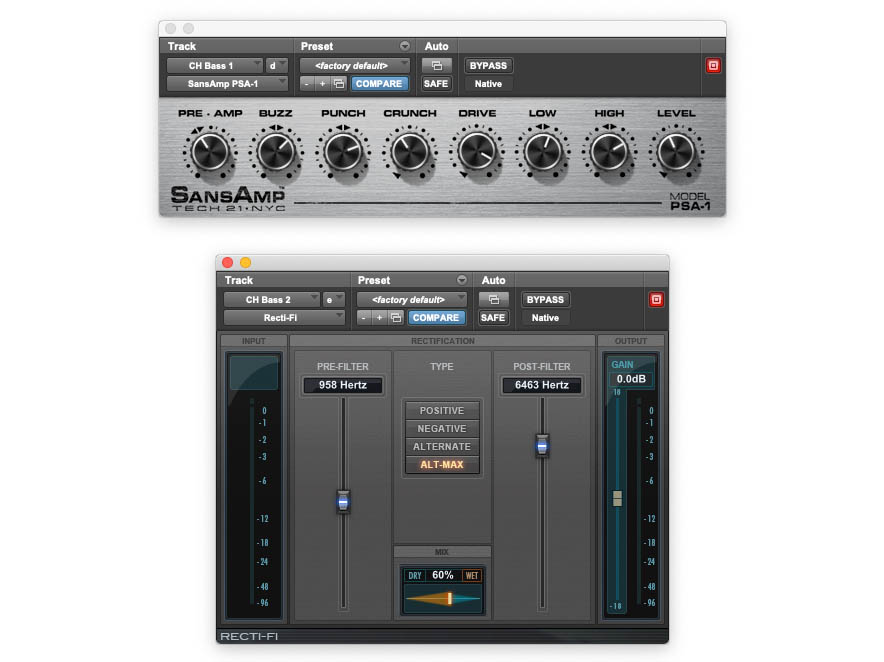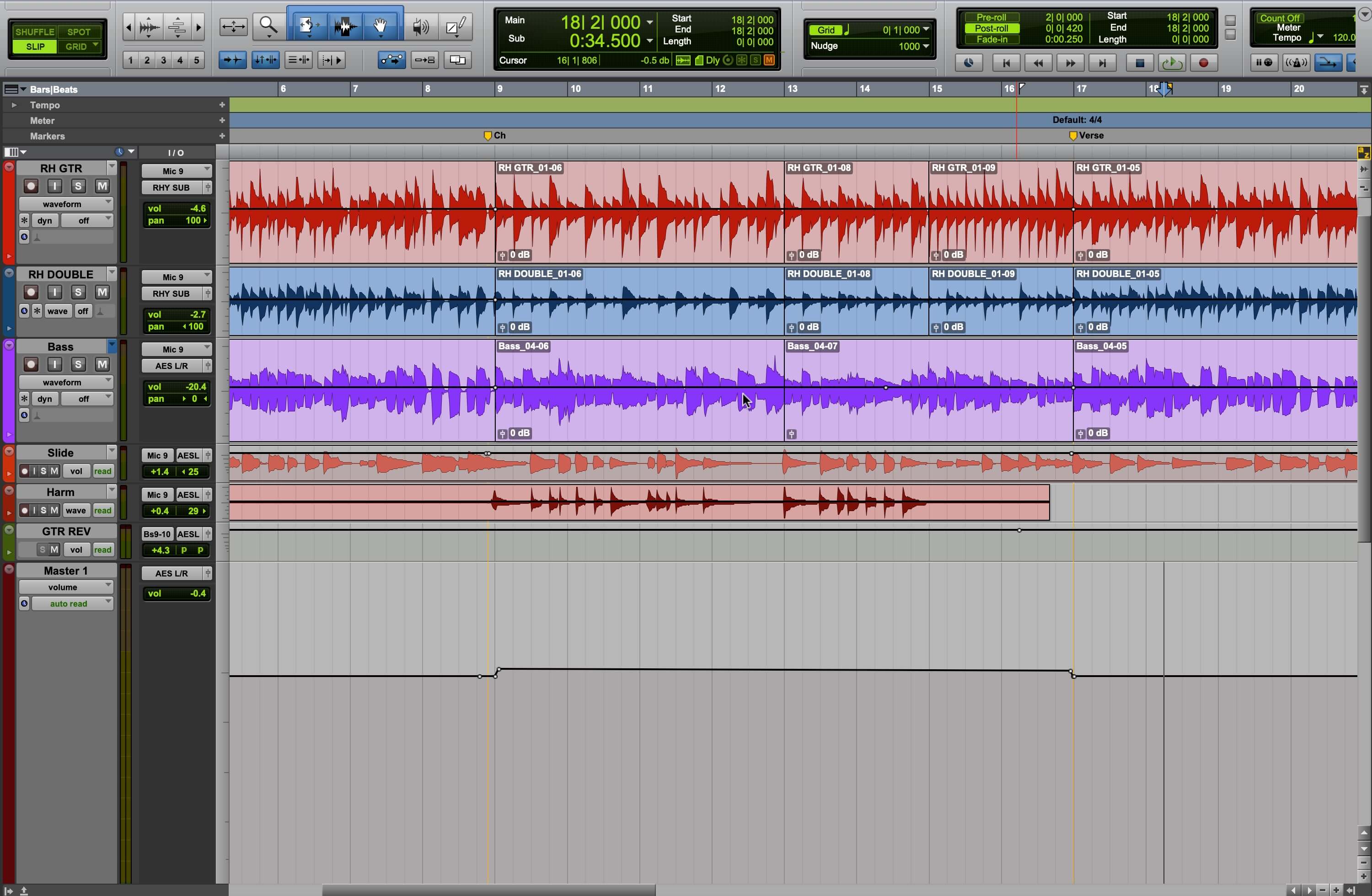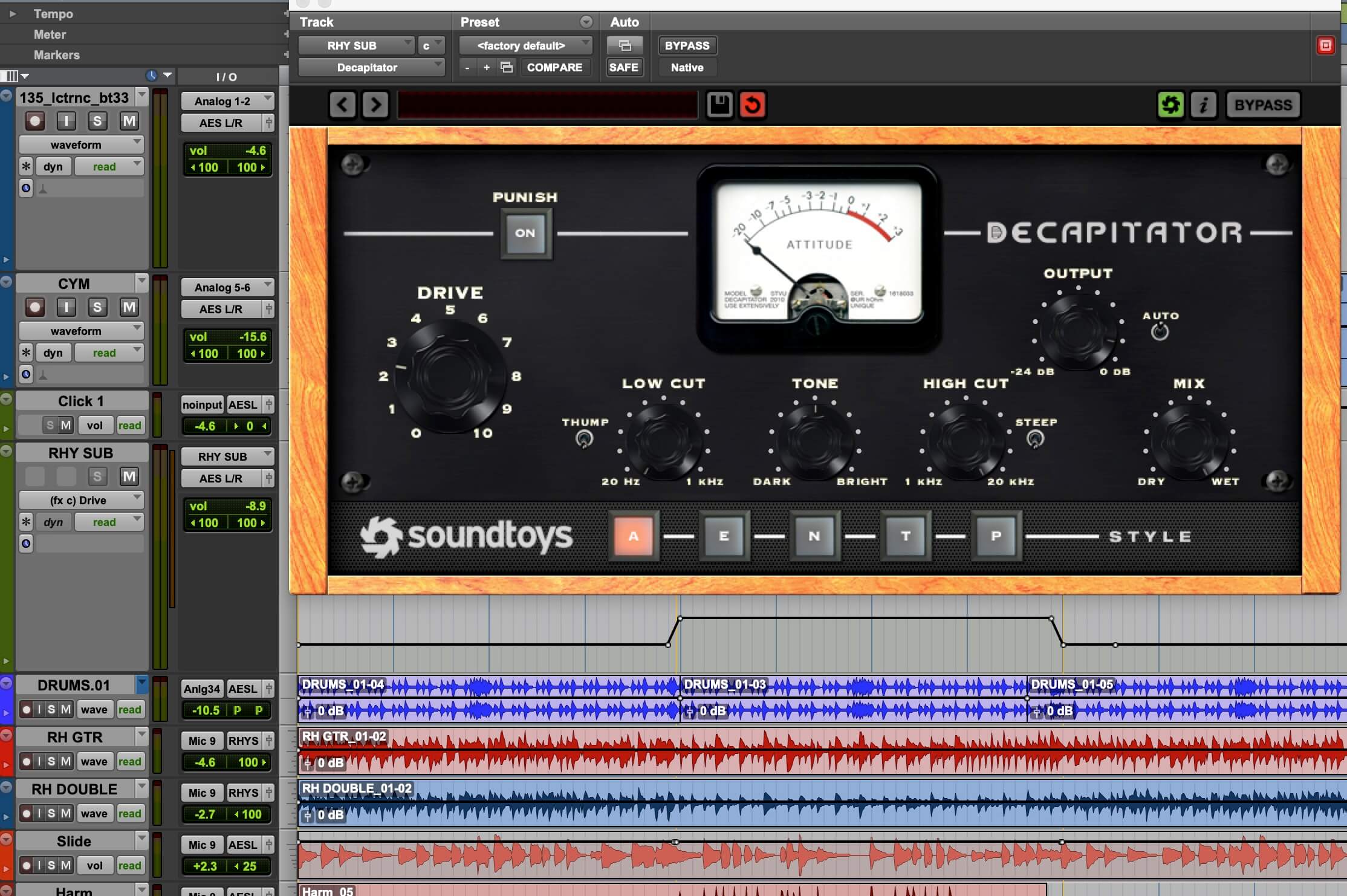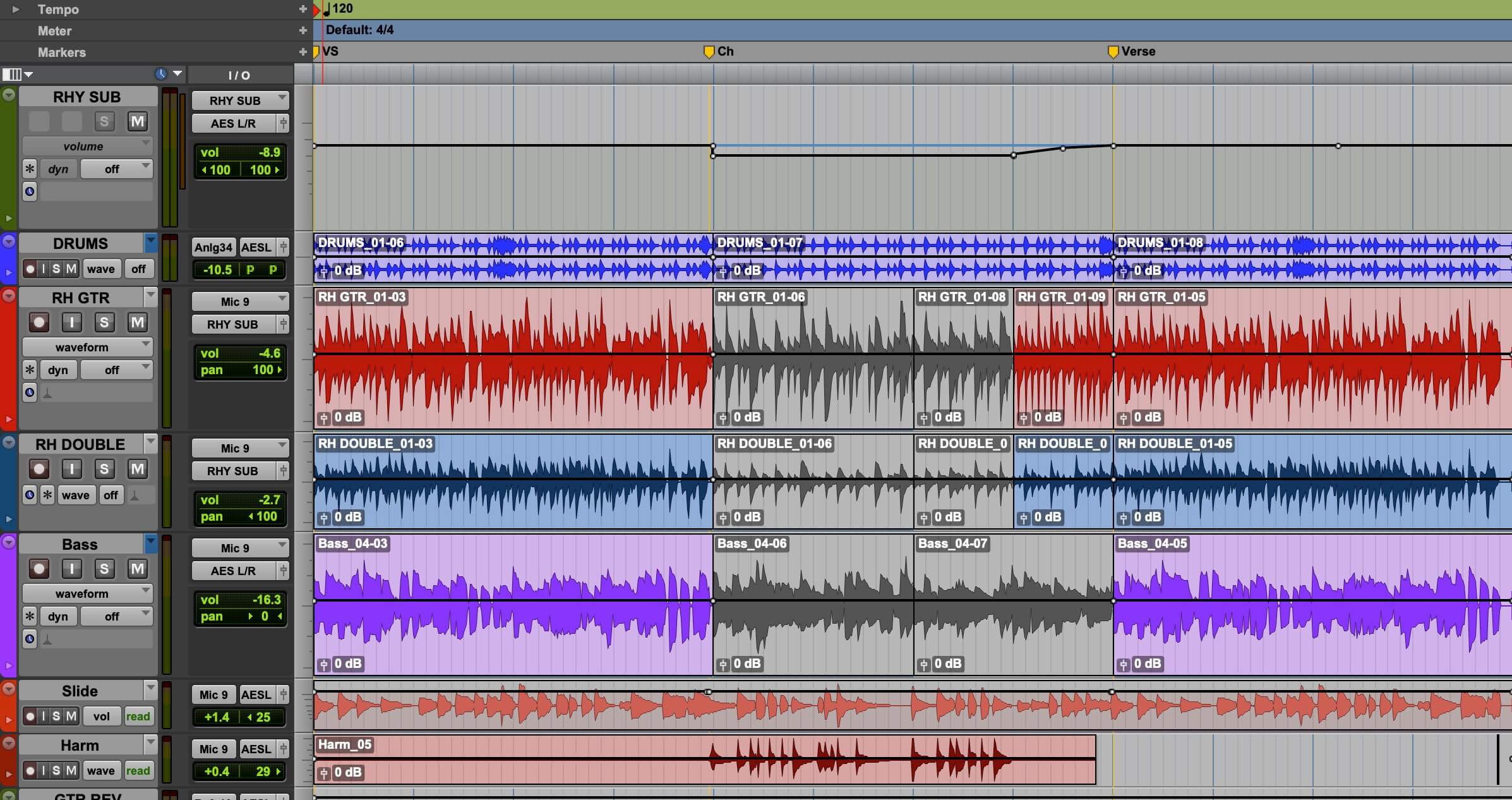Dynamic changes are critical to any arrangement. A song whose dynamics and instrumentation vary as it goes along is much more likely to hook a listener than one that remains static. Just like a painter uses contrast to set off one element from another, an arranger—or a mixer—can use it to make a song more compelling.
In this free excerpt from the Puremix video, "Brian Moncarz Mixing Our Lady Peace," Moncarz talks about how he added a dynamic and textural change to the choruses of the song "Drop Me in the Water." He says one way of adding differentiation between verses and choruses is to automate the levels of the guitars and bass to make them louder in the chorus. But here, he takes a different approach, making copies of the rhythm guitar and bass tracks from the choruses—and then altering the copies with effects.
DOWN AND DIRTY
He starts by showing what he did with the bass. He made two copies of the bass track in the chorus sections only, and applied a different distortion effect to each track, changing both their levels and texture.
On one track (Chorus Bass 1), he added the Avid Tech-21 Sans Amp PSA-1 plug-in, which gives the bass a more distorted sound. On the other track (Chorus Bass 2), he used Avid's Recti-Fi, which created a more synth-like distortion.
Particularly when he plays the song from the end of a verse leading into a chorus, you can really hear the difference the new tracks make. The bass is louder and more distorted. Moncarz says it's almost as if the bass player is stepping on a pedal for the chorus sections.

Here are the settings for Avid's Tech-21 Sans Amp PSA-1 and Recti-Fi plug-ins that Moncarz used on Chorus Bass 1 and Chorus Bass 2.
Moncarz explains that the two plug-ins are creating different types of distortion. The Sans Amp is providing pure distortion. Recti-Fi, he says, makes the bass sound more like a synth bass. It's scooping out the low-mid and midrange and leaving a "sizzle" in the high end.
SIX TIMES A STRING
Moncarz then goes on to explain how he did a similar treatment to the main rhythm guitar track (there's also a drop-tuning rhythm guitar part on the choruses). He copies the chorus sections of one of the mic tracks from the rhythm guitar onto a new track, named "Ch Fuzz."
He inserts a Sans Amp PSA-1 plug-in on this one as well, again with the drive set high, creating a pretty fuzzed-out sound. He added a Waves Scheps 73 preamp plug-in for some EQ and boost, and some compression from the Waves CLA-3A.
Next, he plays one of the choruses all the way through, and you hear the volume and intensity drop when it switches back to a verse. Again, Moncarz makes the analogy between what he did with those copied sections and stepping on an effects pedal. Because the song was tracked "live" in the studio, and the rhythm guitar wasn't an overdub, the guitarist had to stick with pretty much the same sound throughout the song.
By adding an additional part with a different sound to both the bass and live-played rhythm guitars, Moncarz came up with a smart way to not only goose the dynamics in the chorus but also to add a textural change to the bass and guitar sounds during those sections, which further differentiates the choruses from the verses.
IT’S AUTOMATIC
There are many other ways to create dynamic changes when you're in the mix phase. As Moncarz mentioned, one is to use automation to change track volumes in specific sections.
You can automate the volume on selected tracks, like the bass and guitars or the drums, or you can even use the automation on your master track to put in subtle increases that make the full mix a little louder, making it sound like a particular section was played with a little more intensity. With the latter, you have to be extremely subtle to make it sound natural.
If you're going to draw in the automation with your DAW's pencil tool, make sure you increase the track height enough to be able to draw in a small increase. If you don't, it will be impossible to make it subtle enough. By increasing the track height, you're able to access finer gradations of automation data.

Here you see the master fader raised by a small amount, 0.2dB, during the chorus section to give it more energy.
Another way to add dynamics is a similar technique to what Moncarz did with the guitars in the video, except instead of creating a copy of the track, you simply change the sound of the existing track or tracks using processing of some type.
Example 1: A stereo instance of Soundtoys Decapitator, a distortion plug-in, is placed on the rhythm guitar sub track and its Drive control is automated to rise a bit from its lowest setting on the chorus only, adding more distortion and level there. It was done subtly enough that it sounds like the rhythm guitars are just digging in a little more. Pay attention to the sound and level of the rhythm guitars when the song gets to the chorus at bar 9 (when it goes to the V chord).

The automation of the Drive control of Soundtoys Decapitator in Example 1.
Often, you can create a dynamic build from one part to the next by just adding or changing a part.
Example 2: In this example, the drum part changes from a hi-hat pattern to one featuring the ride-cymbal bell, which is enough to give the whole section a boost.
Alternatively, you could add another instrument, for example, some percussion to change up a section. Depending on what's going on in the arrangement, you might or might not keep it in after it enters.
Example 3: Here, a tambourine that enters on the chorus to add energy. It comes in with an eighth-note pattern. It stays in after the chorus but (at least temporarily) drops down to a quarter-note pattern.
GIVE ME A BREAK
Adding a breakdown section late in a song, where most of the instruments drop out, is a great way to create contrast in an arrangement. It provides the listener with a significant dynamic change, and also makes the following section seem even more prominent when all the instruments come back in. You can automate your DAW's mute buttons or utilize its region-muting features to create the breakdown.
Example 4: Here, a breakdown is created on a chorus by muting everything but the lead instruments and the drums. Then, in the last two measures of the chorus, the rhythm guitars come in and are automated from a low volume back to where they were in the mix, to add a little bit of a crescendo to the end of the breakdown.

You can see the breakdown in the chorus section, with the gray regions being muted. At the top, the rhythm guitar sub track has a volume automation increase drawn in for when the rhythm guitars come back in in the last two measures of the breakdown.
Those are just a few of the many possibilities for making an arrangement more compelling through dynamic and instrumentation changes. If you're a mixer and the song arrangement seems too static, you have plenty of tools at your disposal to change that, you just need to get creative.